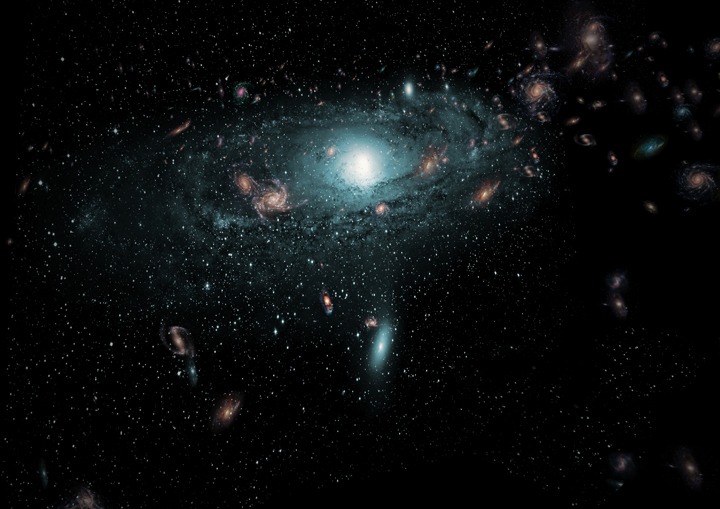Hundreds of previously unknown galaxies have been found hiding behind our own galaxy.

The galaxies are close, in astronomical terms: just 250 million light years from Earth. But, until now, they haven’t been seen. That’s because the bulge of our galaxy, the Milky Way, has kept them out of sight. Our “blind spot” is known as the Zone of Avoidance, where the dust of our galaxy obscures anything in that area in visible light.
READ MORE: Canadian PhD student wins award for discovering galaxies can be bullies
However, using radio astronomy, we can peer though the dust to what is beyond. Astronomers using the Parkes radio telescope in Australia, peered through the Zone of Avoidance and saw 883 galaxies, about a third of which had never before been seen.
The findings were published in the Feb. 9 issue of the Astronomical Journal.
Annotated animation showing hidden galaxies discovered in the ‘Zone of Avoidance’ from ICRAR on Vimeo.
Finding these galaxies will help shed light on a region dubbed the Great Attractor, which lies about 150 million light years away. The Great Attractor is pulling the Milky Way and hundreds of thousands of other galaxies towards it with a gravitational mass of about a billion million suns (1,000,000,000,000,000). Scientists discovered this region in the 1970s.
“We don’t actually understand what’s causing this gravitational acceleration on the Milky Way or where it’s coming from,” said lead author Lister Staveley-Smith, from the University of Western Australia node of the International Centre for Radio Astronomy Research (ICRAR) which conducted the research.
“We know that in this region there are a few very large collections of galaxies we call clusters or superclusters, and our whole Milky Way is moving towards them at more than two million kilometres per hour.”
Finding these galaxies might now help explain the movement of our galaxy.
“An average galaxy contains 100 billion stars, so finding hundreds of new galaxies hidden behind the Milky Way points to a lot of mass we didn’t know about until now,” said University of Cape Town astronomer Professor Renée Kraan-Korteweg.


Comments